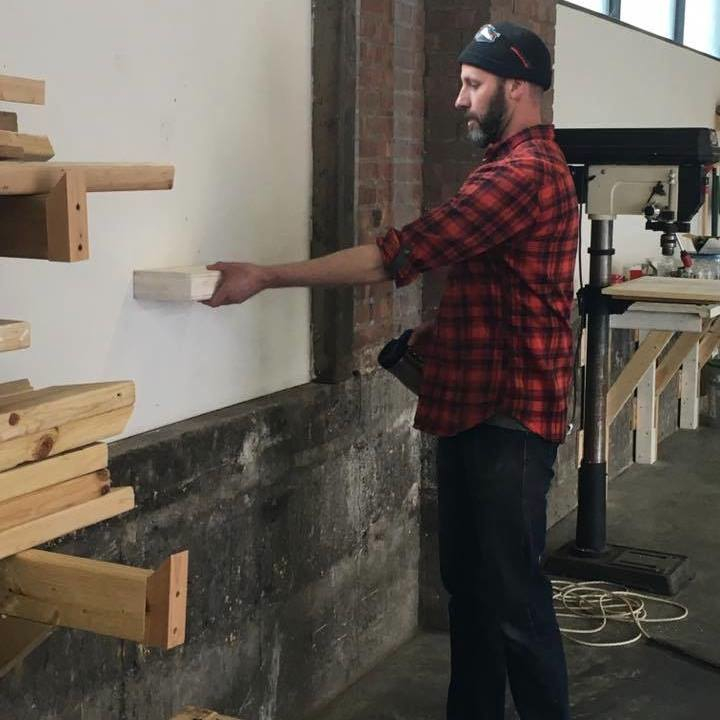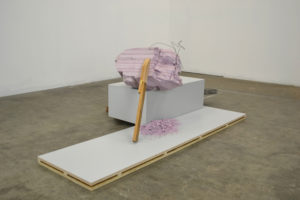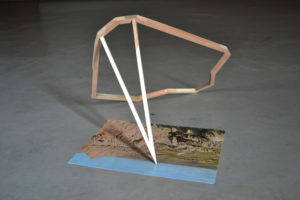
Putting to practice my knowledge and skills is my livelihood
Josh’s Story:
Since completing my MFA in 2010, I have endeavored to make art the foundation of my livelihood. Though I am a practicing studio artist, I do not rely on the sale of my work for an income. A quick look at my website will demonstrate my lack of broad, commercial appeal… Instead, I derive a livelihood from the knowledge and skills accumulated from the pursuit of making my work.
Putting this philosophy to practice, I have taken on several roles; teaching art courses part-time at the university level, working as an on-call museum preparator, serving as an art department shop technician, and currently in a full-time capacity, as the Residency Arts Technician at the Bemis Center for Contemporary Arts. My multifaceted employment history comes in handy at the Bemis, where all staff must wear multiple hats and possess a depth of utility. My primary responsibility is overseeing the Okada Sculpture and Ceramics Facility and providing technical support and process demonstrations to the artists-in- residence, though it’s not uncommon for me to be unclogging a drain, interviewing an intern candidate, or handling artwork for the exhibitions program. For the most part, my position is quite literally a collage of my past occupations, a synthesis of my experience as a teacher, an art handler, a fabricator, a technician, and an artist. That being said, I am still engaged in “the hustle”, as I teach a 3-D foundations course at the University of Nebraska at Omaha in the evening.
Having a livelihood with many moving parts has its measure of challenges. Navigating museum practices, researching and maintaining shop equipment, instructing college art students and (now) professional artists in the operation of a multitude of power tools and fabrication techniques, presents an array of (related, but equally involved) subjects vying for my attention. At times, it’s easy for me to lose sight of the big picture, or in other words, undercut the career that prompted my vocational abilities – being an artist, and more specifically, a sculptor.
Through a healthy dose of self-reflection, reinforced by natural porosity, my stuttering (yet persistent) studio practice has evolved along side my livelihoods. Completing the circle, my years of exhibition fabrication, tool investigation, and building organizational, shop fixtures have found a ready home in my sculpture. Part bricoleur, part tradesman, I mine my immediate environments for construction materials and found objects to break down and reorganize with my growing aptitude for carpentry – a direct byproduct of my livelihood.
About Josh:

Sculptor Josh Johnson makes connections between two environments — one at hand, and the other remembered. His current series, Distance Learning, offers a sideways glance of Plains landscape and the creation of Mount Rushmore, softening the edges between the physicality of what is materially accessible
and the limited view offered by the mind’s eye. Drawing upon the rock formations of the South Dakota Badlands and their fabricated proxies dotting Lincoln’s Antelope Creek greenway, Johnson carves, constructs, and joins second hand materials into lonely vistas alluding to the slippages associated with memory’s shaky hold on place.
Josh Johnson earned a BFA at the University of North Dakota, and an MFA at the University of Nebraska-Lincoln. He has exhibited nationally, including shows at the Joslyn Art Museum in Omaha, the Soo Visual Art Center in Minneapolis, Colorado State University, and Manifest Gallery in Cincinnati. Josh received a 2016 Nebraska Arts Council Individual Artist Fellowship, and was twice selected as a finalist for the William and Dorothy Yeck Young Sculptor’s Competition at Miami University in Oxford, OH. Josh has taught sculpture at Nebraska Wesleyan University, the University of Nebraska-Lincoln, and the College of Visual Arts. He is currently the Residency Arts Technician at the Bemis Center for Contemporary Arts in Omaha, NE and teaches 3-D foundations at the University of Nebraska at Omaha.

